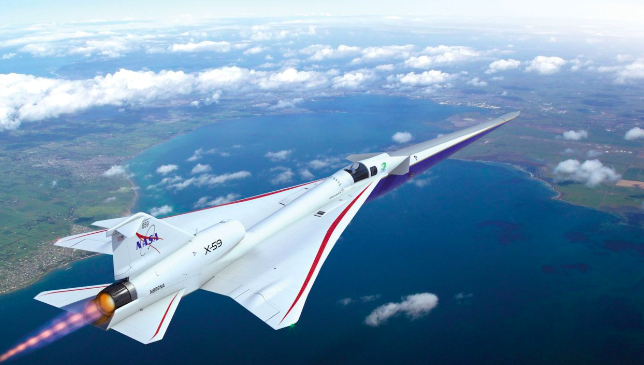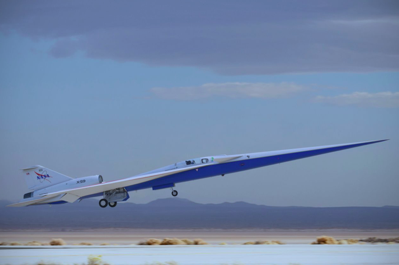
Lockheed Martin
Since the cessation of Concorde in 2003, expeditiously traversing the Atlantic has become a thing of the past. The duration of flights between London and New York is approximately eight hours, or closer to seven hours in the opposite direction. The current record for this route stands at just under five hours from New York to London, facilitated by a favorable jetstream.
However, the prospect of supersonic travel has been reintroduced, and it is none other than NASA that has put forth the notion that a New York-London flight could take as little as 90 minutes in the future.
In a blog post regarding its “high-speed strategy,” the space agency has confirmed that it has recently conducted research into the possibility of commercial flights reaching speeds of up to Mach 4, which is over 3,000 miles per hour, in the future.
The space agency has officially confirmed in a blog post regarding its “high-speed strategy” that it has recently conducted a study on the feasibility of future commercial flights reaching speeds of up to Mach 4, which is equivalent to over 3,000 miles per hour. The study, conducted by NASA’s Glenn Research Center, has indicated the existence of potential passenger markets in approximately 50 established routes. These routes are primarily limited to transoceanic journeys, such as those over the North Atlantic and the Pacific, due to the fact that certain nations, including the United States, currently prohibit supersonic flight over land.
Nevertheless, NASA is actively engaged in the development of “quiet” supersonic aircraft, known as the X-59, as part of its Quesst mission. The agency is hopeful that these innovative aircraft will eventually lead to the modification of existing regulations, thereby allowing for the operation of aircraft flying at speeds ranging from Mach 2 to Mach 4, which translates to approximately 1,535 to 3,045 miles per hour. It is worth noting that the Concorde, a previous supersonic aircraft, had a maximum speed of Mach 2.04, or 1,354 miles per hour. If a jet were to travel at Mach 4, it has the potential to complete a transatlantic crossing in as little as 90 minutes.
Subsequent to the completion of its studies, NASA’s Advanced Air Vehicles Program (AAV) is poised to embark upon its next phase of research, which will focus on high-speed travel. The agency has contracted companies to develop designs and explore air travel possibilities, outline risks and challenges, and identify the necessary technologies to make Mach 2-plus travel a reality. Two teams will be engaged in this research endeavor, one led by Boeing and the other by Northrop Grumman Aeronautics Systems. Each team will be tasked with devising aircraft designs that are capable of sustaining high-supersonic speeds.

Lockheed Martin
According to Lori Ozoroski, project manager for NASA’s Commercial Supersonic Technology Project, the development of the X-59 aircraft has been influenced by similar studies conducted a decade ago. Additionally, she stated that the new studies will reassess technology roadmaps and identify further research requirements for a wider range of high-speed capabilities.
Mary Jo Long-Davis, manager of NASA’s Hypersonic Technology Project, emphasized that the next phase will also take into account safety, efficiency, economic, and societal considerations. She further emphasized the importance of responsible innovation.
In July, Lockheed Martin successfully completed the construction of NASA’s X-59 test aircraft, which aims to mitigate sonic booms and potentially enable supersonic flight over land. Ground tests and an initial test flight are scheduled for later this year. NASA’s objective is to gather sufficient data to provide to US regulators by 2027.
(According to CNN)

